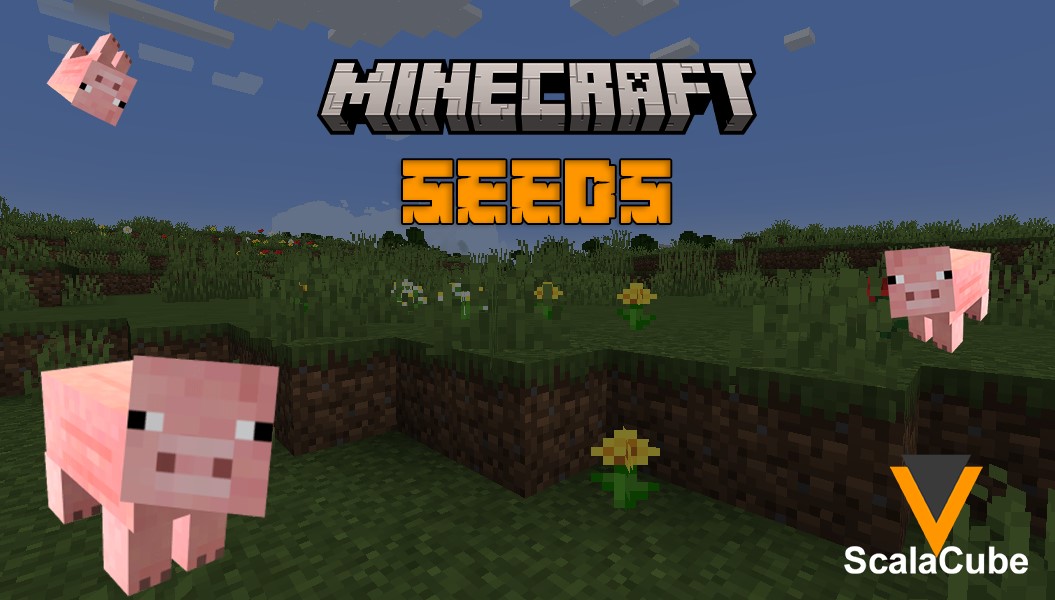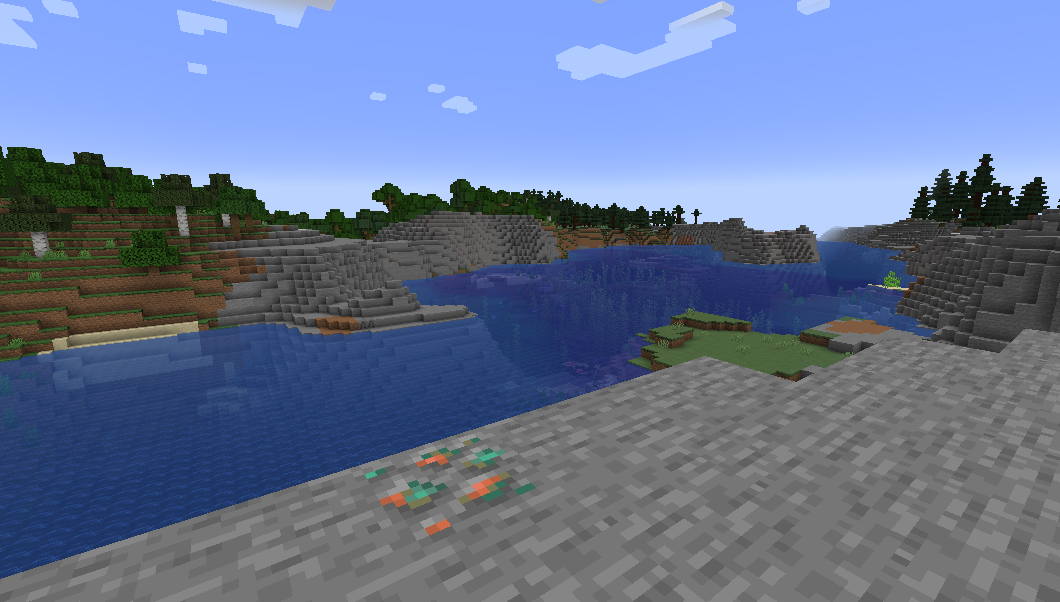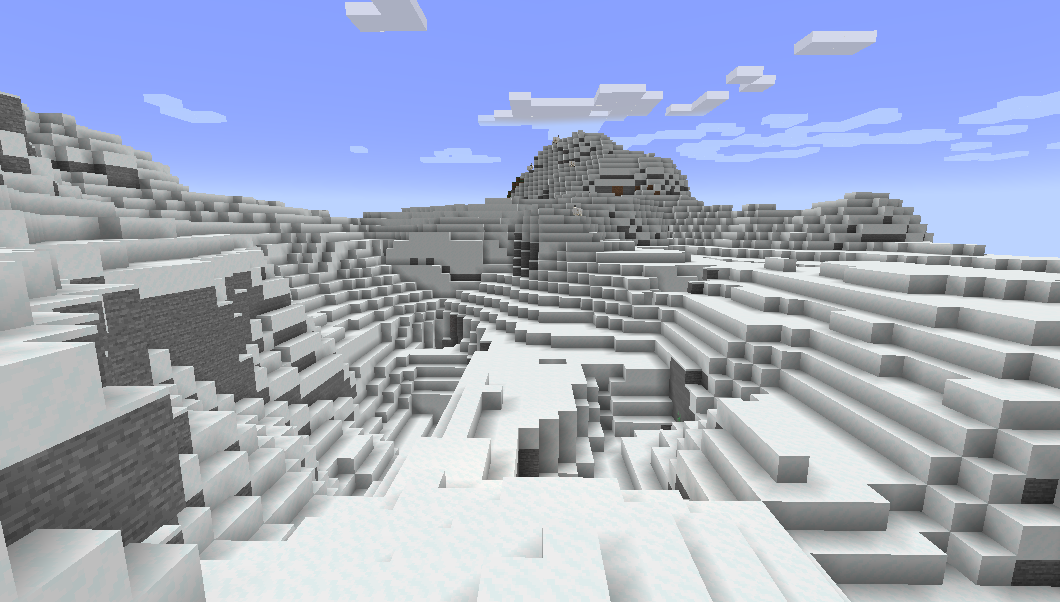Minecraft Seeds
Make Your Own Minecraft Server For Free
Your own Minecraft server is only 5 minutes away! We support simple one click install for over 1000 unique modpacks.
Free Minecraft Server Hosting

And beginning a Minecraft journey is not just about generating a random world. The real magic comes from the seeds — the magical codes that shape your in-game universe. Far from simply spawning a challenge to survive, awesome seeds open up opportunities for exploring masses of landscape as well as creating mega builds and water slides.
In the sprawling world of Minecraft, a choice of seed can build or break a suitable place in which to create. Whether you're an experienced miner or amateur architect, provided by the lay of the land is all the ground needed to set out on any imaginative play. Imagine a picturesque environment full of rich resources all accessible to you. That is the potential harbored in that right seed.
The process is simple yet very crucial. Just enter the seed code when creating your Minecraft world and lean back to watch as the game casts its magic, carving terrains that are anything from awe-inspiring to impressively handy. The result? A canvas for your imagination to run wild, where every block tells a story and every horizon sparks inspiration.
When playing online, one of the most important factors to consider is latency. ScalaCube renting a Minecraft server offers extremely fast servers, and because lagging is a major worry for players, which ScalaCube excels at, you should definitely consider it.
What Do Minecraft Seeds Do?

Whether you're looking for a challenge or some downtime, the best Minecraft seeds will drop you in a welcoming and captivating environment to get you started on your journey. Even though there is no end to the world in Minecraft, you won't travel very far in the first few hours since you have to gather materials quickly in order to survive. Having easy access to a range of necessary items and structures will be quite beneficial.
Minecraft Seeds are essentially numerical codes that correspond to certain Minecraft worlds. A random seed that only points to that world is produced whenever you build a new one in Minecraft. They're obviously much more involved than that in practice, but it does imply that when you make a new world, you may manually insert a seed code from a former one of yours or a seed of a world you've located elsewhere - possibly from the list further down - and obtain an identical duplicate of that world, independent of the platform you're using.
Your Bedrock Edition world seeds can be viewed by starting up your desired world, entering the Settings menu, and then looking under Game Settings for the Seed code. Only the creator of a Minecraft Realm can see the seed. To manually input a seed in Minecraft Bedrock Edition, follow these steps:
- Select 'Play' from the main menu.
- Select 'Create New,' then 'Create New World.
- Scroll down to the 'Seed' box in the Game Settings section.
- You can manually enter a seed code into the box, or you can click the arrow next to the box to access a selection of pre-made seeds that are special to Bedrock Edition.
The '/seed' command in the text feed will return your Java Edition seed. To manually input a seed in Minecraft Java Edition, do the following:
- On the main menu, select 'Single Player.
- Then choose 'Create New World.'
- Choose 'More World Options,' and you'll be taken to a menu where you may enter a seed for your world.
Yet, there are certain nuances when discussing Minecraft seeds. The shape of the terrain and biomes remains the same both in Bedrock and Java Editions, but buildings may generate differently. An "exact duplicate" world can be created only in case a seed is used for the identical version of Minecraft. For instance, if you spawn at a forest biome with a mountain and hamlet in Bedrock Edition, using the exact seed at Minecraft Java Edition will land you at a forest biome with a mountain but settlement may not be present, thus bringing out the version specific nature of Minecraft seeds.
It's also important to remember that if the Minecraft world production algorithm is changed—typically upon the release of a significant update like the most recent one for Minecraft, The Wild—seeds will no longer generate the same world. This suggests that with every update, you'll get a produced environment that is noticeably different, even if you utilise the same seed. The seeds provided here are for the most recent version of Minecraft, 1.19, which includes the The Wild upgrade.
Minecraft Seeds

Some examples of Minecraft seeds include:
- Flower Forest and Savannah
- Mangrove Swamp
- Ancient City below
- Forest Biome Mix
- Lava lake cave
- Deep Dark
- Jagged Peaks
- Massive lush cave
- Desert Village
- Jungle Mansion
Powerful and extremely flexible Minecraft hosting servers allow you to directly add plugins, mods, networking, and other features on the server. All of this is made much easier with ScalaCube virtual private servers hosting.
These servers also include strong configuration options for quickly changing server complexity, allowing you to create the ideal atmosphere for everyone playing on your server.
FAQ
What exactly are Minecraft seeds?
A seed in Minecraft is a series of numbers and letters used to generate a map or world. They dictate the terrain and features of the map or world generator. The seeds serve as your in-game birthplace and work to shape the rest of your universe.
How do I use a Minecraft seed?
If you are creating a new world, enter the seed code into the dedicated field. The game will process it and create a totally different world for your gameplay.
Can I use the same seed for multiple worlds?
Yes, the same seed can be used between Minecraft gameplay instances and give you an identical world or something similar. It's a great way to replicate a landscape that you happen to enjoy.
Do Minecraft seeds work across different platforms?
Yes, generally. In general, Minecraft seeds are in fact cross-platform, because the worlds created by a player of one device may be visited and experienced by players of other devices.

Make Your Own Minecraft Server For Free
Your own Minecraft server is only 5 minutes away! We support simple one click install for over 1000 unique modpacks.
Start Your Server For Free!
Copyright 2019-2025 © ScalaCube - All Rights Reserved.